City of Colmar
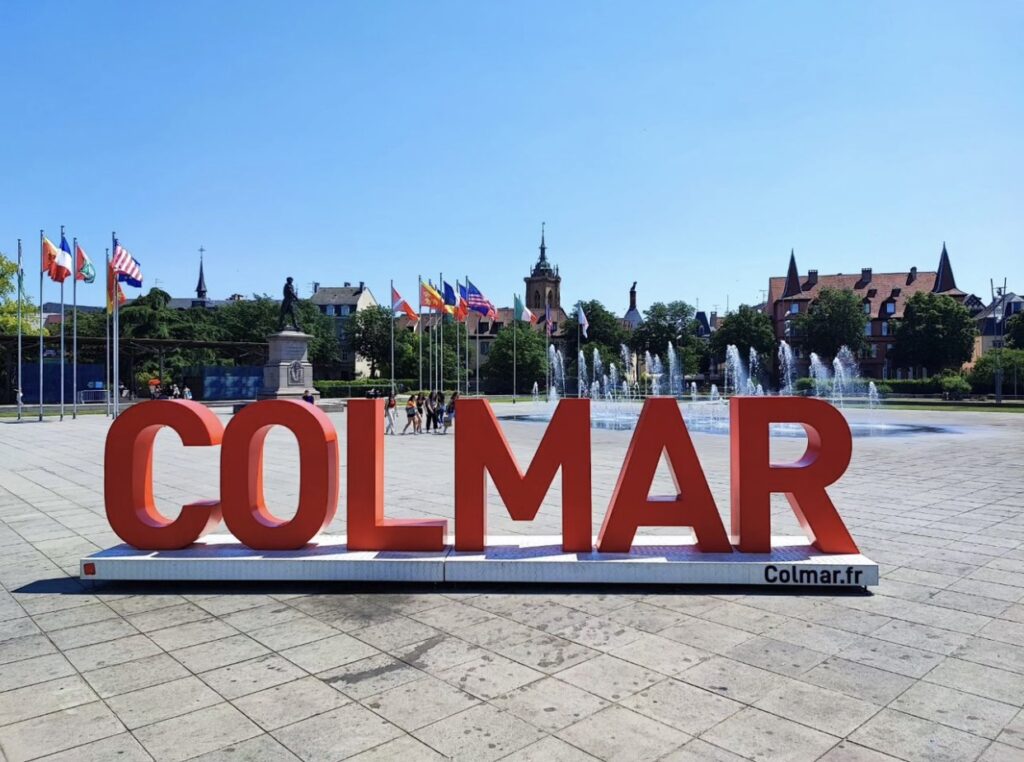
The history of Colmar
The first traces of Colmar date back to the year 823 when it is mentioned in an act of donation by Emperor Louis the Pious, son of Charlemagne. Colmar comes from the Roman Columbarium. At that time, the city was made of wooden buildings: barns, stables, press, barnyard and Colombian fill the city in the 9th century. 3 centuries later, in the Middle Ages, the city was devastated by a fire but was rebuilt and developed until it became Imperial City in the 13th century during the reign of Frederick II of Hohenstaufen. As a result, religious orders settled in Colmar. In the historic center there are still many churches and conventual buildings that were erected by the Dominicans, Augustinians and Franciscans.
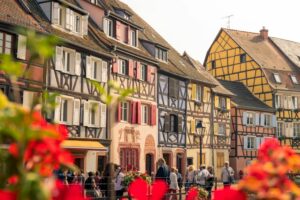
Cultural activities in Colmar
The André Malraux Contemporary Art Space
After the selection of the program commission, as a statutory body, the artists are welcomed with care. Artists can develop unique projects with the Colmar plastic arts school. In order to present and highlight artists with a high level and coming straight from the region but also to welcome regional and international artists sometimes creating collaborations with other art centers. Generally, The André Malraux Contemporary Art Space offers 5 exhibitions each year. At least once a year, an exhibition is dedicated to a local or regional artist.
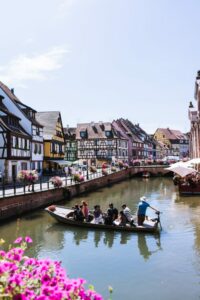
Unterlinden Museum
The museum is housed in a former Dominican convent dating from the 13th century. Sculptures and paintings from the end of the Middle Ages and the Renaissance are presented here. The Issenheim altarpiece sculpted by Nicolas de Haguenau around 1510 and painted by Mathias Grünewald from 1512 to 1516 is a masterpiece of Western art which is preserved in Unterlinden. This piece has left its mark on the world history of Art. Thus, its past makes the museum with a rich cultural identity.
This museum also contains a decorative art collection, a modern art collection (works by Monet, Picasso, etc.) and an archeology collection. MUSEUM-UNTERLINDEN.COM
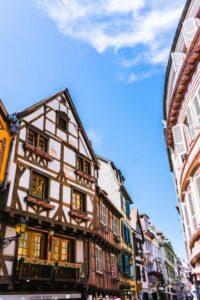
The Rhine National Opera
Three cities make up the Opéra national du Rhin: Strasbourg, Colmar and Mulhouse. The creative activity of Colmar is the Opera Studio, which is a training cell for young singers. After more than 30 years of existence, the Alsatian experience is a model, an essential institution of operatic life in France as everywhere in the world, which has even managed to maintain its unshakable link with its regional and European roots.
The Opera was awarded with the “National Opera” label in 1997. WWW.OPERANATIONALDURHIN.EU

Birthplace of Auguste Bartholdi in Colmar
The house of Auguste Bartholdi in which he grew up is located in the heart of old Colmar. This house has been transformed into a museum divided into three levels, housing sculpture, paintings, drawings and photographs.
Thus, on the ground floor we find the Petit Vigneron designed by Bartholdi is part of the models of the nine public monuments of the city of Colmar.
Then, on the first floor, personal objects and furniture which are key souvenirs of the artist. This floor has been renovated so that it is a copy of Bartholdi’s Parisian apartment, where he spent his last moments.
And finally, on the top floor, the American monuments of Bartholdi are preserved there. Liberty Enlightening the World erected in the harbor of New York, is represented by various works such as models, drawings, paintings, engravings and photographs
MUSEUM-BARTHOLDI.FR

The architectural heritage of Colmar
The Statue of Liberty in Colmar
In 2004, there was the commemoration of the centenary of the death of the sculptor who created the famous Statue of Liberty in New York. Since then, a series of initiatives have been taken following this event, including the installation of a replica of the “Freedom Enlightening the World” at the northern entrance to the city of Colmar. The work aims to honor the one who created one of the most famous works in the world: the creator but also the city of Colmar and its inhabitants: the Colmarians. This replica is one more link with the East Coast of the United States since Colmar has been twinned with the city of Princeton since 1986, a stone’s throw from New York City.
That of Colmar measures 12 meters in height with the torch and was built with a composite tinted in the mass to give it the illusion of patinated copper. It is placed in the busiest lane and still blends into the landscape of Colmar.
Access is privileged for passers-by going to the heart of the city.
WWW.MUSEE-BARTHOLDI.FR
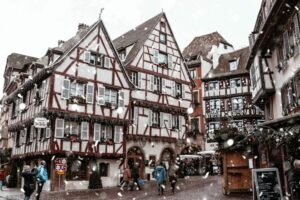
The fishmonger’s district
This district comes straight from a Colmar tradition. Indeed, since the end of the Middle Ages the fish that were caught in the rivers of the city were sold along the long quay of the Poissonnerie by the fishermen.
In 1706, at least forty houses were destroyed by a huge fire in the Poissonnerie district, including that of Jean Henri Frid, one of the most beautiful in Colmar.
The half-timbering of many houses were restored, giving the town a new face between 1971 and 1981.
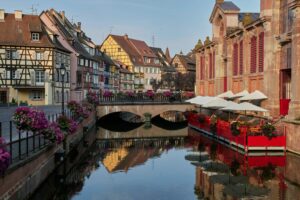
In other words, the city has marked the history, culture and heritage of the region but also of the world, with one of the most famous monuments in the world: The Statue of Liberty. The city carries the history of France and border countries by becoming an Imperial City.
